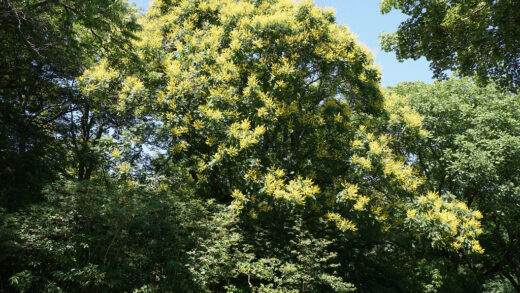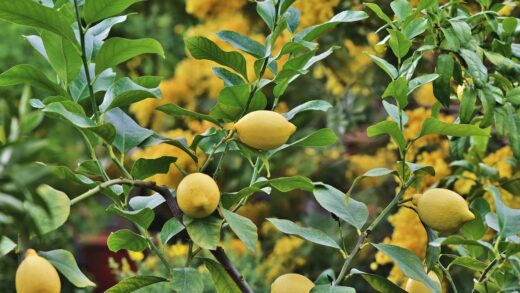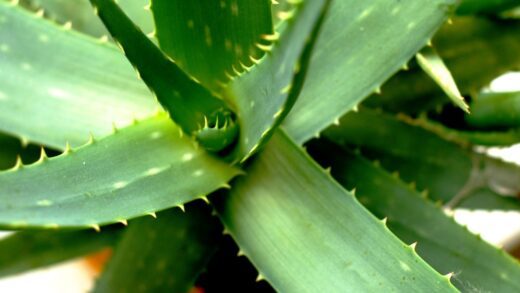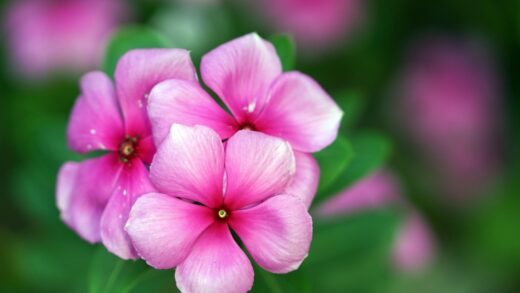Understanding lavender’s cold hardiness
Successfully overwintering English lavender begins with a clear understanding of its inherent cold hardiness and the specific environmental factors that influence its survival during the colder months. While lavender is native to the warm Mediterranean, many cultivars of English lavender have been bred to withstand significant cold, with some being hardy down to USDA zone 5. However, hardiness is not just about tolerating low temperatures; it is equally, if not more importantly, about tolerating winter moisture. The greatest threat to lavender during winter is not the cold itself, but the combination of cold temperatures and wet, waterlogged soil. This is why a plant’s survival is so intrinsically linked to the drainage of its planting site.
A lavender plant prepares for winter by entering a state of dormancy in the autumn as the days shorten and temperatures drop. During this period, its metabolic processes slow down significantly, and it ceases to produce new growth. A properly hardened-off plant, one that has been grown in lean soil and has not been fertilized late in the season, will have tough, semi-woody stems that are much more resilient to freezing temperatures. In contrast, a plant that was over-fertilized and has a lot of soft, tender growth is far more susceptible to damage from frost and cold winds.
Snow cover can be a significant advantage for wintering lavender. A blanket of snow acts as a natural insulator, protecting the plant from the coldest temperatures and the harsh, desiccating effects of winter winds. It keeps the ground temperature more stable and shields the foliage from freeze-thaw cycles that can be very damaging. In regions where consistent snow cover is common, lavender often overwinters with minimal issues, provided the underlying soil is well-draining. Problems arise in areas with cold, wet winters where there is little to no snow, leaving the plant exposed to the full force of the elements.
It is also important to recognize that a plant’s age and overall health play a large role in its ability to survive the winter. A young, newly planted lavender will be more vulnerable than a mature, well-established plant with a deep and extensive root system. Similarly, a plant that has been stressed by disease, pests, or poor growing conditions during the summer will enter the winter in a weakened state and will be less likely to survive. Therefore, good care throughout the growing season is a critical component of successful winter preparation.
Preparing the plant for winter
Proper preparation in the autumn is crucial for helping your English lavender navigate the challenges of winter successfully. One of the most important preparatory steps is to cease all fertilization by mid-summer. Applying fertilizer late in the season encourages a flush of new, tender growth that will not have sufficient time to harden off before the first frost arrives. This vulnerable growth is easily damaged by the cold, which can stress the plant and create entry points for disease, so allowing the plant to naturally slow its growth is essential.
More articles on this topic
The timing of the final pruning of the season is also a key consideration. While a hard prune is often done after the first flush of flowers in the summer, you should avoid any significant pruning late in the autumn. The existing foliage and stems provide a degree of natural insulation for the crown of the plant during the winter. A light trim to remove any remaining flower stalks is acceptable, but leave the bulk of the foliage intact until spring. This allows the plant to enter dormancy with a protective buffer against cold winds and fluctuating temperatures.
Ensuring the area around the base of the lavender plant is clean and free of debris is another important autumn task. Rake away any fallen leaves or other organic matter that has accumulated around the crown. This material can trap moisture against the base of the plant, creating a damp environment that promotes rot and fungal diseases during the wet winter months. A clean base allows for better air circulation and helps the area to dry out more quickly, which is critical for preventing the crown of the plant from decaying.
For lavender planted in the ground, a final deep watering before the ground freezes can be beneficial, especially if the autumn has been particularly dry. This ensures the plant is well-hydrated before entering its dormant period. However, this should only be done if the soil is dry; if you have had adequate autumn rains, this step is unnecessary. The goal is for the plant to go into winter with moist, but not saturated, soil, setting it up for a healthy and restful dormancy.
The role of winter mulch
Mulching can be a beneficial practice for protecting English lavender over the winter, but the type of mulch used is critically important. Traditional organic mulches, such as wood chips, straw, or shredded leaves, are generally not suitable for lavender. These materials tend to hold a great deal of moisture, and when piled up against the base of the plant, they can create the exact damp, stagnant conditions that lead to crown rot, especially during winter thaws and spring rains. This is the primary reason why many gardeners advise against mulching lavender at all.
More articles on this topic
However, if protection is needed, particularly in colder climates or for newly planted lavender, an inorganic or a very airy organic mulch is the best choice. A layer of pea gravel or small stones spread around the base of the plant is an excellent option. This type of mulch does not retain moisture, helps to keep the crown of the plant dry, and allows for good air circulation. It also has the added benefit of absorbing heat from the sun during the day and radiating it back at night, which can slightly moderate the soil temperature.
In very cold regions where extra insulation is necessary, a loose, airy organic material can be used, provided it is applied correctly. Pine boughs or evergreen branches are a good choice because they do not compact and will trap snow, which is an excellent natural insulator, while still allowing for some air movement. The key is to lay them loosely over the plant after the ground has frozen. This ensures you are insulating the plant from further cold, rather than trapping moisture in unfrozen ground.
Whatever type of winter protection you use, it is crucial to remove it promptly in the early spring as soon as the threat of severe cold has passed. Leaving mulch or protective covers on for too long can trap moisture and heat, encouraging the premature emergence of tender new growth that can be damaged by late frosts. It can also create a damp environment that promotes fungal diseases as the weather warms up. Timely removal allows the plant to wake up from dormancy naturally and lets the sun and air reach the base of the plant.
Winter care for container-grown lavender
English lavender grown in containers is significantly more vulnerable to winter cold than plants grown in the ground. The soil in a pot is exposed to cold air from all sides, meaning the roots can freeze much more quickly and completely than they would in the insulated earth. In many climates, leaving a potted lavender plant outdoors and unprotected throughout the winter is a recipe for disaster, as the roots are unlikely to survive the sustained freezing temperatures. Therefore, special measures must be taken to protect containerized plants.
One of the most effective methods for protecting potted lavender is to move the container to a sheltered location. An unheated garage, a cold frame, or a protected porch are all excellent options. The goal is to keep the roots from freezing solid while still allowing the plant to remain dormant in a cold environment. The location should be cool and receive some indirect light if possible, but the priority is protection from harsh winds and extreme temperature fluctuations.
If you do not have a suitable indoor space, you can try to insulate the pot itself. Grouping several containers together can help to reduce heat loss. You can also wrap the pot in bubble wrap or burlap and then pile loose leaves or straw around the outside of the container, making sure the insulating material does not cover the plant’s foliage. Another technique is to “heel in” the pot by sinking it into an empty spot in a vegetable garden or a compost pile for the winter, which allows the ground to provide natural insulation for the roots.
Watering is minimal but still important for container-grown lavender during the winter. The soil should be allowed to dry out almost completely, but the plant should not be allowed to desiccate entirely. Check the soil every month or so, and if it is bone dry, provide a very small amount of water, just enough to moisten the soil slightly. Overwatering is a major risk, as a frozen, saturated block of soil will kill the roots. The aim is simply to keep the roots from drying out completely while the plant is in its dormant state.


















